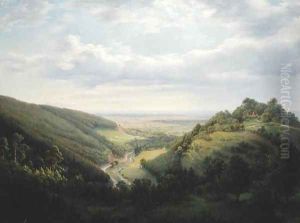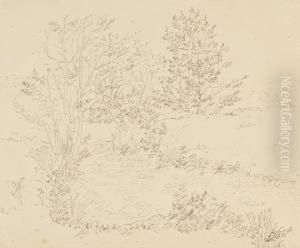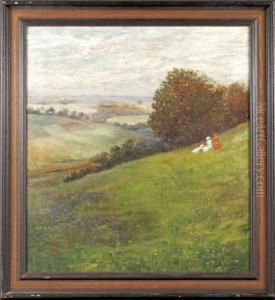Heinrich Schilbach Paintings
Heinrich Schilbach was a German artist known for his landscape paintings, born on May 28, 1798, in Darmstadt, Germany. Schilbach's artistic career unfolded during a period of significant cultural and artistic transformation in Europe, aligning with the Romantic movement, which emphasized emotion, nature, and the expression of the sublime.
Schilbach received his early education in his hometown before embarking on his artistic studies. His initial training took place at the Darmstadt Art School. Furthering his education, Schilbach traveled extensively across Europe, which was a common practice among artists of his time to gain exposure to different styles and techniques. During his travels, he visited Italy, a country that had a profound impact on his work. The Italian landscape, with its historical ruins and luminous light, inspired many of Schilbach's paintings.
Throughout his career, Heinrich Schilbach was particularly celebrated for his ability to capture the atmospheric qualities of the environments he depicted. His works often featured the ruins of classical antiquity, imbued with a sense of nostalgia and the passage of time, themes that resonated with the Romantic sensibilities of the era. His adept use of light and shadow created dramatic and evocative scenes that appealed to the viewer's emotions.
Despite his evident skill and the quality of his work, Schilbach did not achieve the same level of fame as some of his contemporaries. Nevertheless, he was respected among his peers and collectors of his time for his contributions to landscape painting. His works remain appreciated by art historians and collectors for their representation of 19th-century Romanticism in German art.
Heinrich Schilbach's life and career were relatively short, and he passed away on February 12, 1851, in Darmstadt. His legacy continues through his paintings, which are held in various art collections and museums, serving as a testament to his artistic vision and the era in which he lived.


